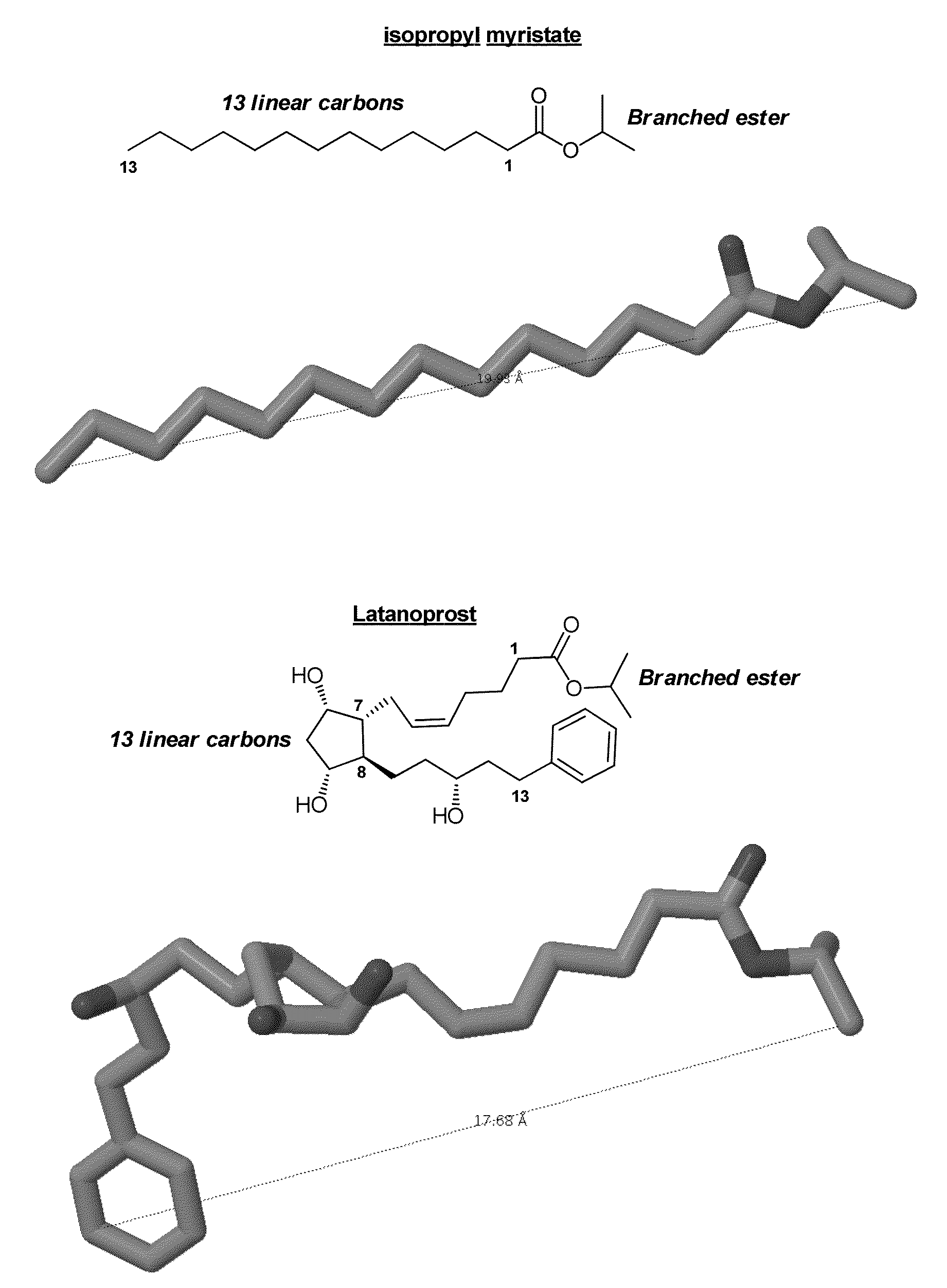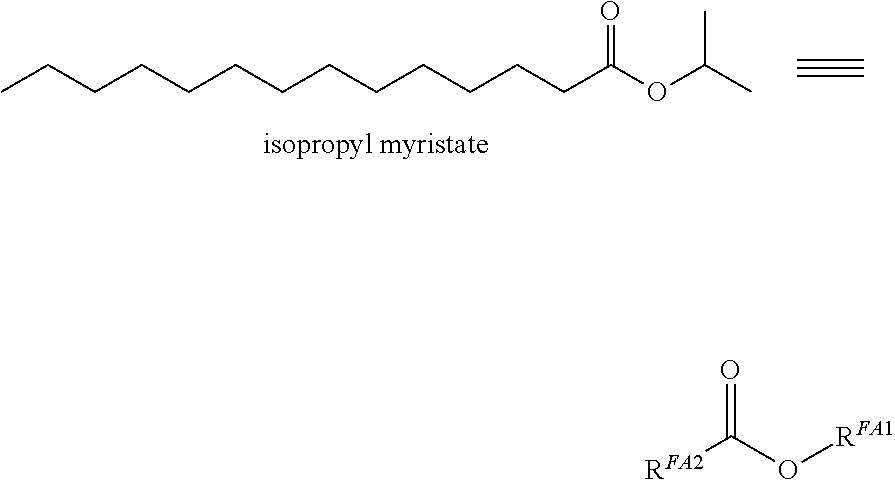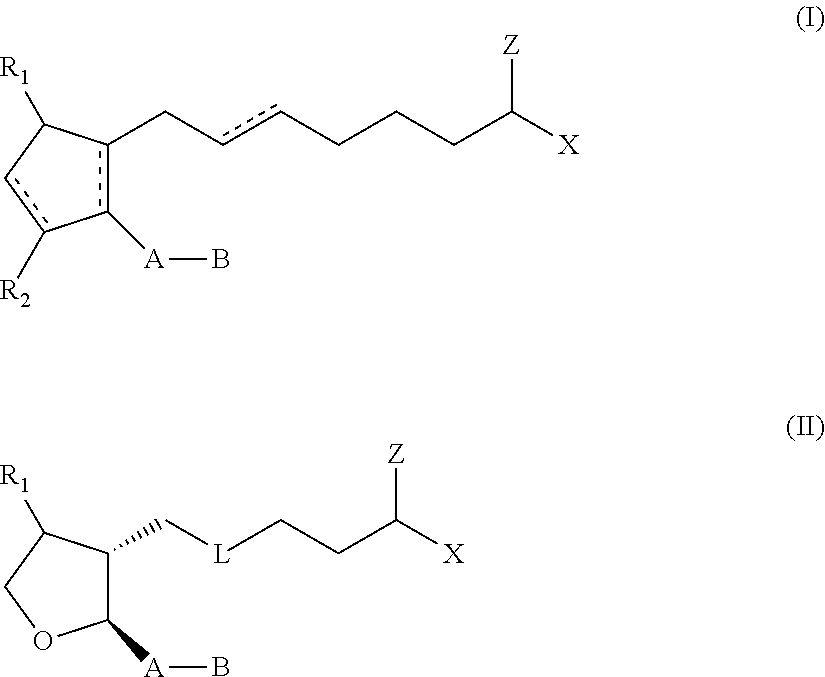Compositions for topical delivery of prostaglandins to subcutaneous fat
a technology of prostaglandins and fat, applied in the field of compositions for topical delivery of prostaglandins to subcutaneous fat, can solve the problems of excessive body fat, reduced self-esteem, and psychosocial distress of excess body fat, and achieves the effects of less attractive and youthful excess submental fat, and less attractive excess body fa
- Summary
- Abstract
- Description
- Claims
- Application Information
AI Technical Summary
Benefits of technology
Problems solved by technology
Method used
Image
Examples
example 1
[0441]A composition for local reduction of subcutaneous fat was prepared as follows:
[0442]
TABLE 1IngredientsAmountLatanoprost100mgIsopropyl myristate5gPropylene glycol15gWhite petroleum jelly79.9g
[0443]Neat latanoprost was added to a mixture of propylene glycol and isopropyl myristate. To the resulting mixture was added melted petroleum jelly. The mixture was stirred thoroughly and allowed to cool, yielding about 100 grams of an ointment with a final latanoprost concentration of 0.1% (w / w). It was noted that the compared to pure petrolatum, the mixture was more flowable, more spreadable, more easily mixed (i.e., requiring less force to mix), and more easily dispensed from a container, e.g., a jar or compressible tube (i.e., requiring less force and flowing in a more controlled manner).
example 2
[0444]A composition for local reduction of subcutaneous fat was prepared as follows:
[0445]
TABLE 2IngredientsAmount per 100 g of compositionLatanoprost0.3gChlorobutanol, anhydrous0.5gIsopropyl myristate5gWhite petroleum jelly94.2g
[0446]Chlorobutanol was dissolved in isopropyl myristate, and to the resulting solution neat latanoprost was added and dissolved. To the resulting solution was added melted petroleum jelly. The mixture was stirred thoroughly and allowed to cool, yielding about 100 grams of an ointment with a final latanoprost concentration of 0.3% (w / w). Compositions were prepared according to the above formula at various scales ranging from about 50 to about 1000 g. Furthermore, comparable formulations comprising 0.1%, 0.15%, and 0.5% (w / w) were likewise prepared, with the difference in latanoprost content balanced by the amount of petroleum jelly. On HPLC analysis, these compositions were found to be uniform and to have the correct potency.
example 3
[0447]The solubility of latanoprost in a 10:1 solution of isopropyl myristate and chlorobutanol was assessed by a standard (USP) protocol at 25° C. The upper limit of solubility at this temperature was found to be about 60 to about 85 mg / g. This high degree of solubility was surprising, because latanoprost is insoluble or poorly soluble in most solvents. Furthermore, this high degree of solubility was crucial for practicing the aseptic process described in the next example.
PUM
| Property | Measurement | Unit |
|---|---|---|
| melting point | aaaaa | aaaaa |
| melting point | aaaaa | aaaaa |
| melting point | aaaaa | aaaaa |
Abstract
Description
Claims
Application Information
 Login to View More
Login to View More - R&D
- Intellectual Property
- Life Sciences
- Materials
- Tech Scout
- Unparalleled Data Quality
- Higher Quality Content
- 60% Fewer Hallucinations
Browse by: Latest US Patents, China's latest patents, Technical Efficacy Thesaurus, Application Domain, Technology Topic, Popular Technical Reports.
© 2025 PatSnap. All rights reserved.Legal|Privacy policy|Modern Slavery Act Transparency Statement|Sitemap|About US| Contact US: help@patsnap.com



